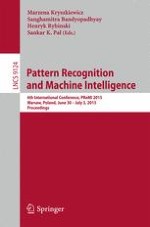2015 | OriginalPaper | Buchkapitel
Fuzzy Rough Sets Theory Applied to Parameters of Eye Movements Can Help to Predict Effects of Different Treatments in Parkinson’s Patients
verfasst von : Anna Kubis, Artur Szymański, Andrzej W. Przybyszewski
Erschienen in: Pattern Recognition and Machine Intelligence
Aktivieren Sie unsere intelligente Suche, um passende Fachinhalte oder Patente zu finden.
Wählen Sie Textabschnitte aus um mit Künstlicher Intelligenz passenden Patente zu finden. powered by
Markieren Sie Textabschnitte, um KI-gestützt weitere passende Inhalte zu finden. powered by
